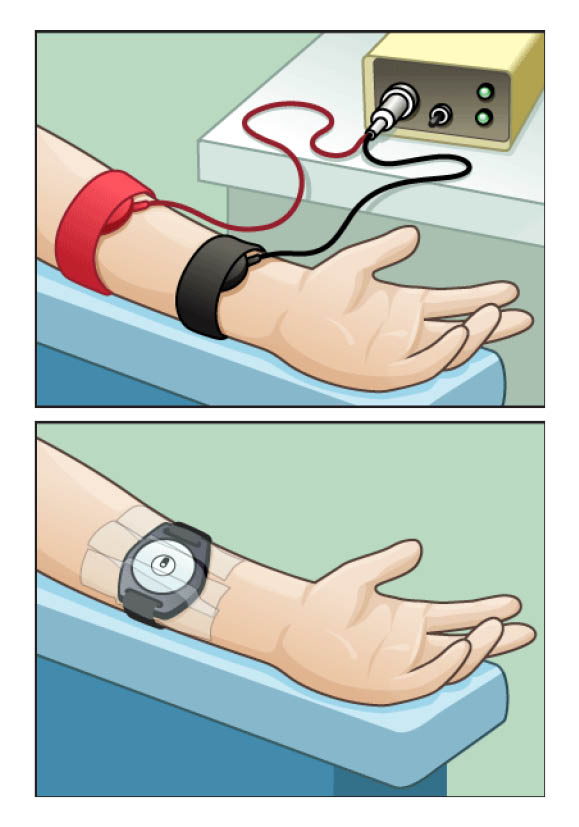Sweat test
Information for parents from the Pathology Department
You have been referred to the hospital for a sweat test. This leaflet will explain:
what a sweat test is
how to prepare for the test
what happens during the test; and
when you will receive your results.
We hope this leaflet answers some of the questions you may have. If you have any further questions or concerns, please speak to a member of your healthcare team.
What is a sweat test?
A sweat test measures the amount of salt in a person’s sweat. A small amount of sweat is collected from the lower arm. In very small babies, it may be necessary to use the sweat from their upper leg.
The test is usually done on children:
who have frequent chest infections or unexplained bouts of diarrhoea (poo is loose and watery); or
children who are not gaining weight or growing normally.
It may also be done on babies to follow-up one of the newborn blood spot tests.
Your doctor will consider the possible causes for these symptoms. They may arrange a sweat test to confirm that a condition called cystic fibrosis is not the cause.
Where do we go for the test?
Ward staff will arrange a date and time for you to come to Kent and Canterbury Hospital.
On the day of the test, please come to the reception desk at the Children’s Assessment Centre.
Directions and maps are available on the Trust website.
Is there anything I need to bring to the hospital?
Clothing: please bring a long-sleeved top that is easy to get on and off.
Toys: a favourite toy or game, story book, or tablet. These may help your child to sit quietly for the first part of the test and distract from the tingling feeling.
Babies may be breast or bottle fed during the test.
How long will we be in hospital?
The test should only take about 1 hour, after which you can go home.
What will happen during the test?

A specially trained nurse will collect the sweat sample, using a sweat stimulation procedure.
Two pilocarpine gel discs (used to make your child sweat) are placed on a clean area of skin on your child's arm or leg.
To get the gel into the skin, the nurse stimulates the area using a small electrical current from a torch battery. Your child should sit quietly. This takes about 5 minutes.
The area is cleaned. The nurse will strap a small plastic device that looks like a wristwatch, over the area where one of the gel discs was in contact with your child's skin.
The device is left in place for about 30 minutes, to collect your child’s sweat. Encourage your child to be active during this time, to help the sweat. Long sleeves help to hide the device.
When the test is complete, the device is removed and sent to the laboratory to measure the amount of salt in it.
Some children do not sweat readily, particularly those with eczema. It may be necessary to repeat the test on another limb (arm or leg), or come back for a further appointment.
Will the test hurt?
No. The procedure may cause your child to feel a slight tingling or warm sensation, but is not painful. The area of skin which was stimulated may stay red for a few hours. This is normal and nothing to worry about.
In rare cases (about 1 in 50,000) there is a risk of a minor burn (Wescor Inc. 1999). If you have any concerns or questions, please speak to your doctor or nurse.
How will I find out my child's results?
The laboratory will send your child's test results to the doctor who requested the test. Your doctor will let you know the results when they are available. Laboratory staff are not allowed to give out results on the telephone.
Where can I get more information?
If you have any further questions about why this test is being done, please speak to the doctor or consultant who requested the test.
If you have questions about your appointment, please phone:
Children’s Assessment Centre, Kent and Canterbury Hospital, Canterbury
Telephone: 01227 864052